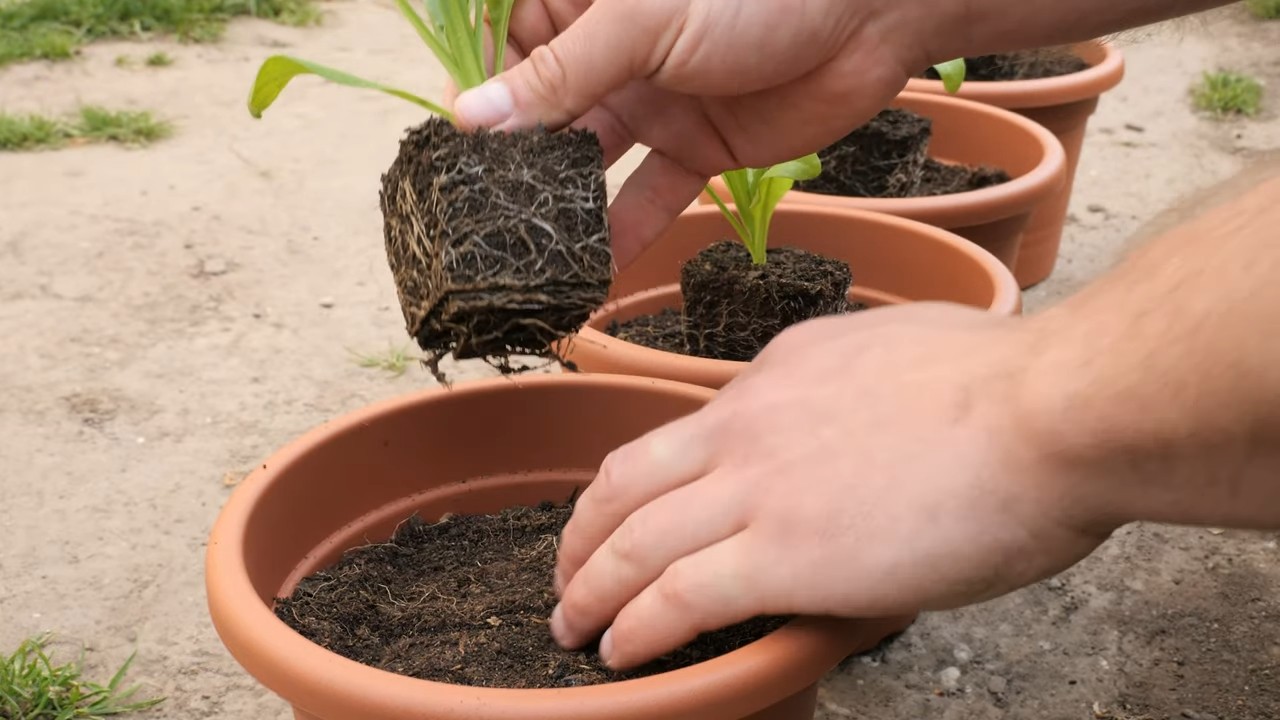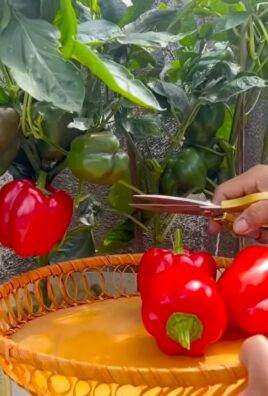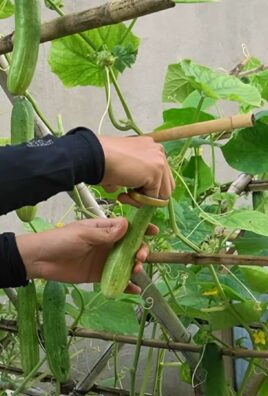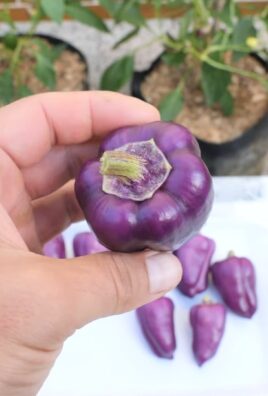Growing Calendula from Seed is easier than you might think, and I’m here to show you how! Have you ever admired those vibrant, sunny blooms and wished you could have them gracing your own garden? Well, you absolutely can! For centuries, Calendula, also known as pot marigold, has been cherished not only for its beauty but also for its incredible medicinal properties. From ancient Egyptians using it for skin rejuvenation to medieval cooks adding its petals to soups and stews, Calendula boasts a rich and fascinating history.
But beyond its historical significance, why should *you* bother growing Calendula from seed? In today’s world, where we’re all looking for natural and sustainable solutions, Calendula offers a fantastic way to add beauty, health benefits, and even culinary flair to your life. Plus, it’s a fantastic way to attract pollinators to your garden! I’ve found that knowing how to easily grow Calendula from seed is a game-changer for anyone wanting to create a thriving and beneficial home garden. This DIY guide will provide you with simple, step-by-step instructions, ensuring you can enjoy these cheerful flowers in no time. Let’s get started!

Growing Calendula from Seed: A Beginner’s Guide
Hey there, fellow gardening enthusiasts! I’m so excited to share my experience with growing calendula from seed. It’s honestly one of the easiest and most rewarding plants to cultivate, and the bright, cheerful blooms are a welcome addition to any garden. Plus, calendula has amazing medicinal properties! So, let’s dive in and get our hands dirty.
Choosing Your Calendula Seeds
Before we even think about planting, let’s talk seeds. There are tons of calendula varieties out there, from the classic orange and yellow to more unique shades like apricot and cream. Some are even double-flowered, meaning they have extra petals for a fuller, more dramatic look.
* Consider your space: Some varieties grow taller than others. If you’re planting in containers, you might want to opt for a more compact variety.
* Think about color: Do you want a vibrant burst of orange, or something a little more subtle?
* Read the seed packet: Pay attention to the days to maturity, which will tell you how long it will take for your plants to start flowering.
I personally love the ‘Pacific Beauty’ mix because it offers a range of colors and is super easy to grow. But feel free to experiment and find your own favorites!
When to Plant Calendula Seeds
Calendula is pretty forgiving when it comes to planting time. You can either direct sow the seeds outdoors or start them indoors for a head start.
* Direct Sowing: This is the easiest method. Wait until after the last frost in your area. Calendula prefers cooler temperatures, so early spring or late summer/early fall are ideal times to plant.
* Starting Indoors: If you live in a colder climate or want to get a jump start on the season, you can start your seeds indoors 4-6 weeks before the last frost.
I usually direct sow my calendula seeds in the spring, but I’ve also had success starting them indoors. It really just depends on my schedule and the weather!
Direct Sowing Calendula Seeds Outdoors
This is my preferred method because it’s so simple!
1. Prepare the Soil: Choose a sunny spot in your garden with well-draining soil. Calendula isn’t too picky, but it will thrive in soil that’s rich in organic matter. You can amend the soil with compost or well-rotted manure. I like to loosen the soil with a garden fork and remove any rocks or debris.
2. Sow the Seeds: Make shallow furrows in the soil, about 1/2 inch deep. Sprinkle the seeds evenly along the furrows, spacing them about 1-2 inches apart.
3. Cover the Seeds: Gently cover the seeds with soil and lightly pat it down.
4. Water Thoroughly: Water the area gently but thoroughly. You want to make sure the soil is moist but not waterlogged.
5. Keep the Soil Moist: Keep the soil consistently moist until the seeds germinate, which usually takes about 5-10 days. I check the soil moisture daily and water as needed.
6. Thin Seedlings: Once the seedlings emerge and have a few sets of true leaves, thin them out to about 8-12 inches apart. This will give them enough room to grow and prevent overcrowding. I know it’s hard to thin out plants, but it’s essential for healthy growth!
Starting Calendula Seeds Indoors
If you’re starting your seeds indoors, you’ll need a few supplies:
* Seed starting trays or small pots
* Seed starting mix
* A spray bottle or watering can
* A heat mat (optional)
* A grow light (optional)
Here’s how to do it:
1. Fill the Trays or Pots: Fill your seed starting trays or pots with seed starting mix. Gently tap the trays to settle the soil.
2. Sow the Seeds: Make a small indentation in the soil, about 1/4 inch deep. Place one or two seeds in each indentation.
3. Cover the Seeds: Gently cover the seeds with soil and lightly pat it down.
4. Water Thoroughly: Water the soil gently but thoroughly using a spray bottle or watering can.
5. Provide Warmth: Place the trays or pots on a heat mat to provide bottom heat. This will help the seeds germinate faster.
6. Provide Light: Place the trays or pots under a grow light or in a sunny window. Calendula seeds need light to germinate.
7. Keep the Soil Moist: Keep the soil consistently moist until the seeds germinate, which usually takes about 5-10 days.
8. Harden Off Seedlings: Once the seedlings have a few sets of true leaves, it’s time to harden them off before transplanting them outdoors. This means gradually exposing them to outdoor conditions over a period of about a week. Start by placing them in a sheltered spot outdoors for a few hours each day, gradually increasing the amount of time they spend outside.
9. Transplant Seedlings: After hardening off, transplant the seedlings into your garden or containers, spacing them about 8-12 inches apart.
Caring for Your Calendula Plants
Once your calendula plants are established, they’re pretty low-maintenance.
* Watering: Water regularly, especially during dry spells. Calendula prefers moist soil, but avoid overwatering, which can lead to root rot. I usually water deeply once or twice a week, depending on the weather.
* Fertilizing: Calendula doesn’t need a lot of fertilizer. You can give it a light feeding of compost tea or a balanced organic fertilizer every few weeks.
* Deadheading: Deadhead spent flowers regularly to encourage more blooms. Simply pinch or cut off the faded flowers just below the flower head. This will also prevent the plants from going to seed too quickly.
* Pest Control: Calendula is generally pest-resistant, but it can sometimes be affected by aphids or spider mites. If you notice any pests, you can spray the plants with insecticidal soap or neem oil. I prefer to use natural pest control methods whenever possible.
* Disease Prevention: Good air circulation is key to preventing fungal diseases. Make sure your plants are spaced properly and avoid overhead watering.
Harvesting Calendula Flowers
One of the best things about growing calendula is harvesting the beautiful flowers! You can use them fresh or dried for a variety of purposes.
* When to Harvest: Harvest the flowers in the morning, after the dew has dried. Choose flowers that are fully open and brightly colored.
* How to Harvest: Simply pinch or cut off the flower heads just below the flower.
* Drying Calendula Flowers: To dry calendula flowers, spread them out in a single layer on a screen or tray in a cool, dark, and well-ventilated place. You can also hang them upside down in small bunches. It usually takes about 1-2 weeks for the flowers to dry completely.
* Storing Dried Calendula Flowers: Once the flowers are dry, store them in an airtight container in a cool, dark place. They should last for about a year.
Using Calendula Flowers
Calendula flowers have a wide range of uses, both culinary and medicinal.
* Culinary Uses: You can add fresh calendula petals to salads, soups, and other dishes for a pop of color and a slightly peppery flavor. They’re also great for garnishing desserts.
* Medicinal Uses: Calendula has anti-inflammatory, antiseptic, and wound-healing properties. You can use it to make salves, creams, and teas to soothe skin irritations, heal wounds, and reduce inflammation. I often make a calendula-infused oil to use in my homemade skincare products.
Troubleshooting Common Calendula Problems
Even with the easiest plants, sometimes things go wrong. Here are a few common problems you might encounter with calendula:
* Leggy Growth: If your calendula plants are getting tall and spindly, it could be a sign that they’re not getting enough sunlight. Move them to a sunnier location or provide supplemental lighting.
* Lack of Blooms: If your calendula plants aren’t blooming, it could be due to a lack of nutrients or too much shade. Fertilize them with a balanced organic fertilizer and make sure they’re getting at least 6 hours of sunlight per day.
* Powdery Mildew: This fungal disease can cause a white, powdery coating on the leaves. Improve air circulation by spacing your plants properly and avoid overhead watering. You can also spray the plants with a fungicide.
* Aphids: These tiny pests can suck the sap from your calendula plants, causing them to become weak and stunted. Spray the plants with insecticidal soap or neem oil.
Saving Calendula Seeds
If you want to save seeds from your calendula plants for next year, it’s super easy!

Conclusion
So, there you have it! Growing calendula from seed isn’t just a gardening project; it’s an investment in beauty, health, and a more sustainable lifestyle. From the vibrant splash of color in your garden to the soothing balm for your skin, calendula offers a wealth of benefits that make the small effort of starting them from seed incredibly worthwhile.
Why is this DIY trick a must-try? Because it empowers you to take control of your garden, your skincare, and your well-being. You’re not just buying a plant; you’re nurturing life from its very beginning, understanding its needs, and reaping the rewards of your labor. Plus, growing calendula from seed is significantly more cost-effective than purchasing established plants, allowing you to cultivate a larger, more abundant patch of these sunny blooms without breaking the bank.
But the benefits extend beyond the practical. There’s a unique satisfaction in watching a tiny seed sprout and grow into a thriving plant, knowing that you played a vital role in its journey. It’s a connection to nature that’s both grounding and inspiring.
Ready to take your calendula growing to the next level? Consider these variations and suggestions:
* Succession Planting: Sow seeds every few weeks throughout the spring and summer to ensure a continuous supply of blooms. This is especially useful if you plan to use calendula for medicinal or culinary purposes.
* Companion Planting: Calendula is a fantastic companion plant for many vegetables, attracting beneficial insects and repelling pests. Try planting it near tomatoes, cucumbers, or carrots.
* Container Gardening: If you have limited space, calendula thrives in containers. Choose a pot that’s at least 12 inches in diameter and use a well-draining potting mix.
* Dried Petal Power: Harvest and dry the petals for use in teas, salves, and other herbal remedies. Spread the petals on a clean cloth in a cool, dark place until they are completely dry.
* Edible Delights: Sprinkle fresh calendula petals on salads, soups, or desserts for a pop of color and a slightly peppery flavor. Just be sure to use petals from plants that haven’t been treated with pesticides.
* Experiment with Varieties: Explore different calendula varieties, such as ‘Pacific Beauty’ for its large, double blooms or ‘Bronzed Beauty’ for its unique copper-colored petals.
Growing calendula from seed is a journey of discovery, and we encourage you to embark on it! Don’t be afraid to experiment, learn from your mistakes, and most importantly, have fun. The rewards are well worth the effort.
We’re confident that you’ll find growing calendula from seed to be a rewarding and enriching experience. So, grab your seeds, prepare your soil, and get ready to witness the magic of nature unfold.
Now, we want to hear from you! Have you tried growing calendula from seed before? What tips and tricks have you learned along the way? Share your experiences, successes, and challenges in the comments below. Let’s create a community of calendula enthusiasts and learn from each other. Your insights could be invaluable to other gardeners who are just starting out. We are excited to see your calendula creations!
FAQ
What is the best time to start calendula seeds indoors?
The ideal time to start calendula seeds indoors is approximately 6-8 weeks before the last expected frost in your area. This allows the seedlings to develop a strong root system before being transplanted outdoors. Check your local frost dates to determine the appropriate timing for your region. Starting them indoors gives them a head start, especially in areas with shorter growing seasons.
How deep should I plant calendula seeds?
Calendula seeds should be planted about ¼ to ½ inch deep in the soil. They need darkness to germinate, but they also need to be close enough to the surface to easily emerge. Avoid planting them too deep, as this can hinder germination.
How long does it take for calendula seeds to germinate?
Calendula seeds typically germinate within 5-14 days, depending on the temperature and moisture levels. Keep the soil consistently moist but not waterlogged during this period. Providing a warm environment (around 70-75°F) can speed up the germination process.
What kind of soil is best for growing calendula?
Calendula prefers well-draining soil that is moderately fertile. A slightly acidic to neutral pH (around 6.0-7.0) is ideal. Amend heavy clay soils with compost or other organic matter to improve drainage. You can also use a good quality potting mix if growing calendula in containers.
How much sunlight does calendula need?
Calendula thrives in full sun, which means at least 6 hours of direct sunlight per day. However, in hotter climates, it can benefit from some afternoon shade to prevent the flowers from scorching. Insufficient sunlight can result in leggy growth and fewer blooms.
How often should I water calendula plants?
Water calendula plants regularly, especially during dry periods. Keep the soil consistently moist but not waterlogged. Overwatering can lead to root rot. A good rule of thumb is to water when the top inch of soil feels dry to the touch.
Do I need to fertilize calendula plants?
Calendula doesn’t require heavy fertilization. In fact, too much fertilizer can result in excessive foliage growth at the expense of flowers. A light feeding with a balanced organic fertilizer in the spring is usually sufficient. Avoid using high-nitrogen fertilizers.
How do I harvest calendula flowers?
Harvest calendula flowers in the morning, after the dew has dried. Choose flowers that are fully open and brightly colored. Cut the flower heads just below the base of the flower. Regular harvesting encourages more blooms.
How do I dry calendula petals?
To dry calendula petals, spread them in a single layer on a clean cloth or screen in a cool, dark, and well-ventilated place. Avoid direct sunlight, as this can fade the color and reduce the potency of the petals. Allow the petals to dry completely, which may take several days to a week. Once dry, store them in an airtight container in a cool, dark place.
Are there any pests or diseases that affect calendula?
Calendula is generally resistant to pests and diseases, but it can occasionally be affected by aphids, powdery mildew, or fungal leaf spots. Inspect your plants regularly and take action promptly if you notice any problems. Aphids can be controlled with insecticidal soap, while powdery mildew and leaf spots can be treated with a fungicide. Good air circulation and proper watering practices can help prevent these issues.
Can I eat calendula flowers?
Yes, calendula petals are edible and can be used to add color and flavor to salads, soups, and other dishes. They have a slightly peppery taste. However, be sure to use petals from plants that haven’t been treated with pesticides or herbicides.
Is calendula safe for pets?
Calendula is generally considered safe for pets, but it’s always a good idea to consult with your veterinarian before giving it to your animals. Some pets may be allergic to calendula.
How can I use calendula for skincare?
Calendula has anti-inflammatory and wound-healing properties that make it beneficial for skincare. You can use calendula-infused oil, salves, or creams to soothe irritated skin, treat minor cuts and burns, and reduce inflammation. Many commercially available skincare products contain calendula extract. You can also make your own calendula-infused products at home.
Can I save seeds from my calendula plants?
Yes, you can easily save seeds from your calendula plants. Allow the flower heads to dry completely on the plant. Once they are dry and brown, you can harvest the seeds. The seeds are crescent-shaped and brown in color. Store them in an airtight container in a cool, dry place until you are ready to plant them.




Leave a Comment